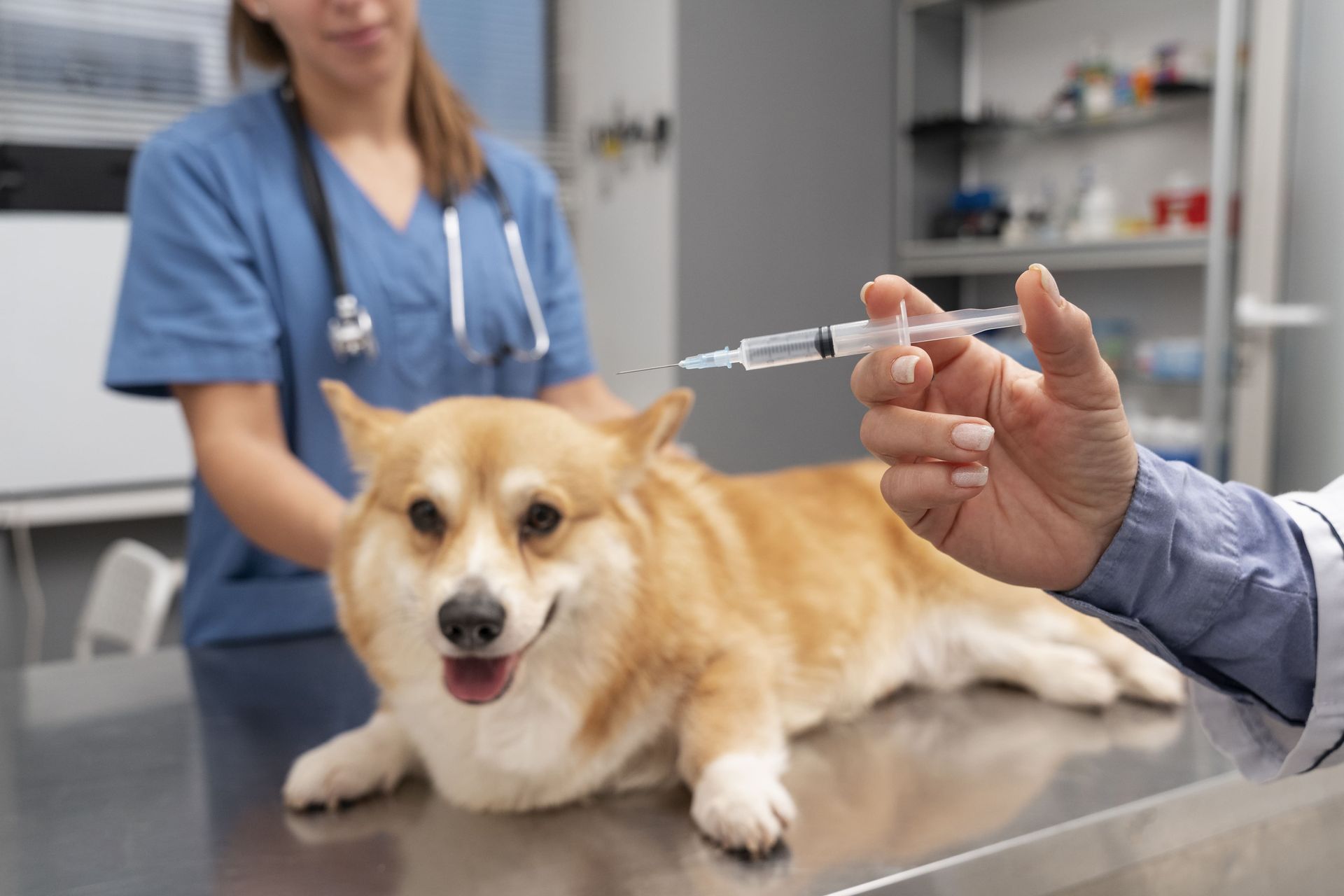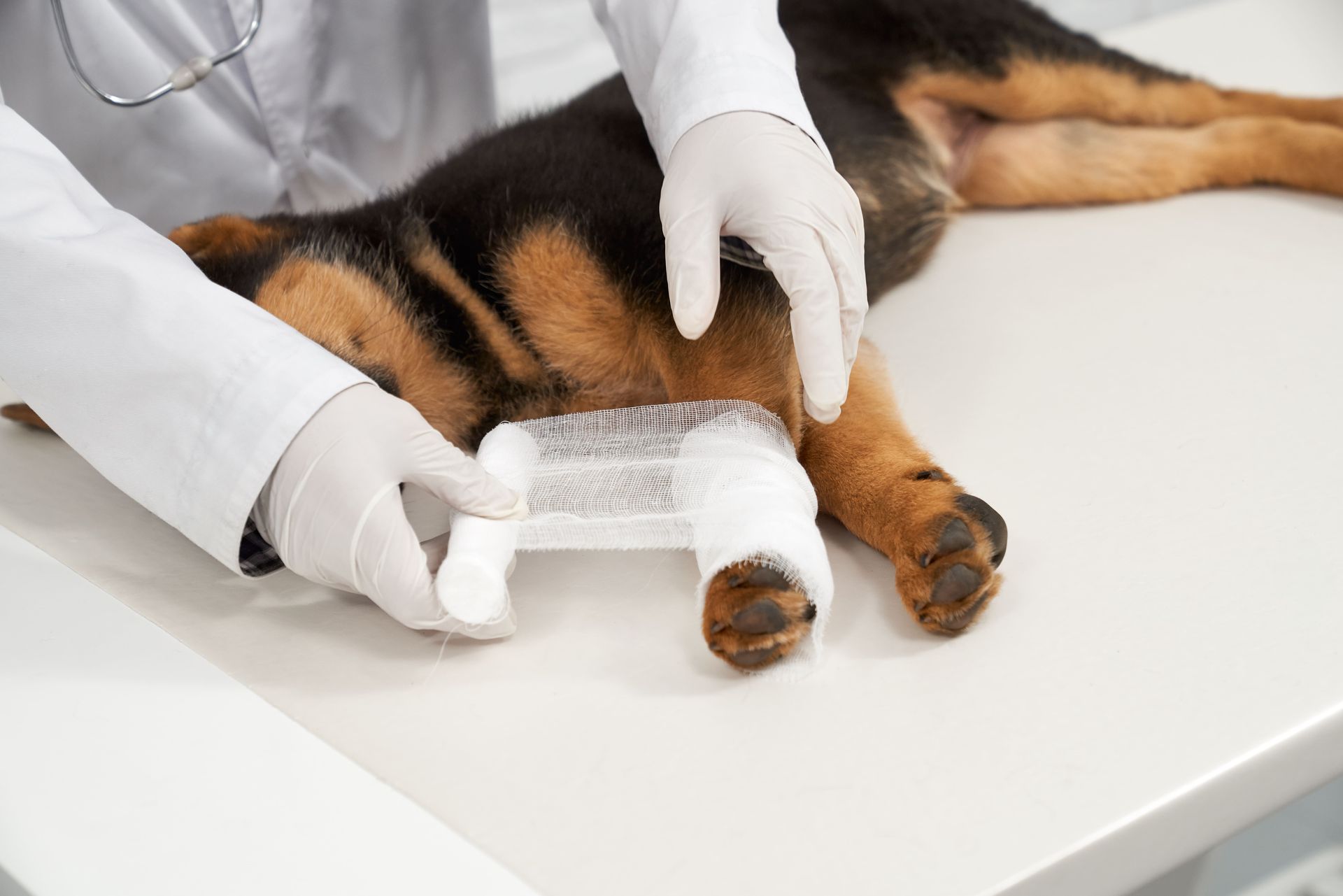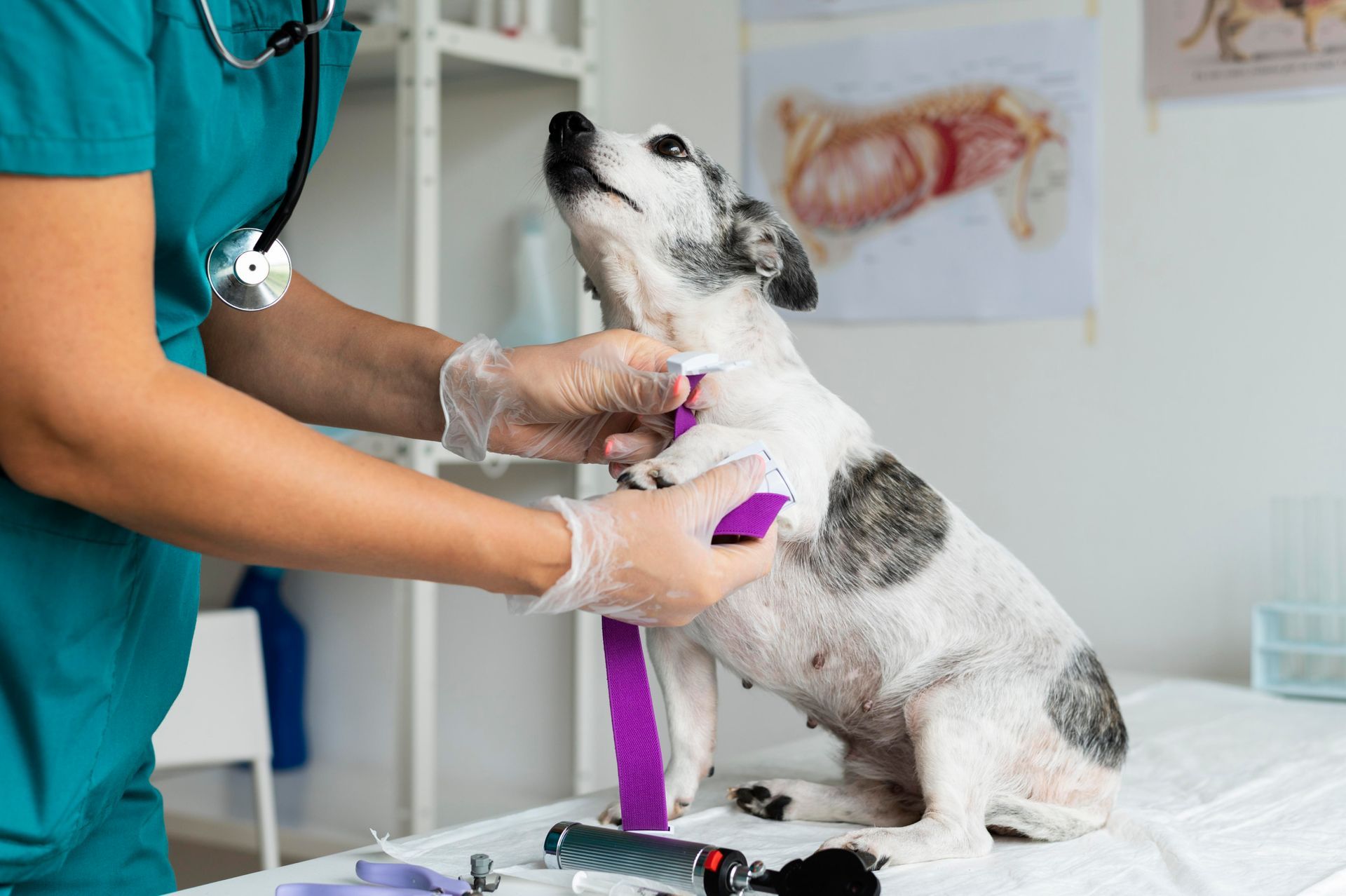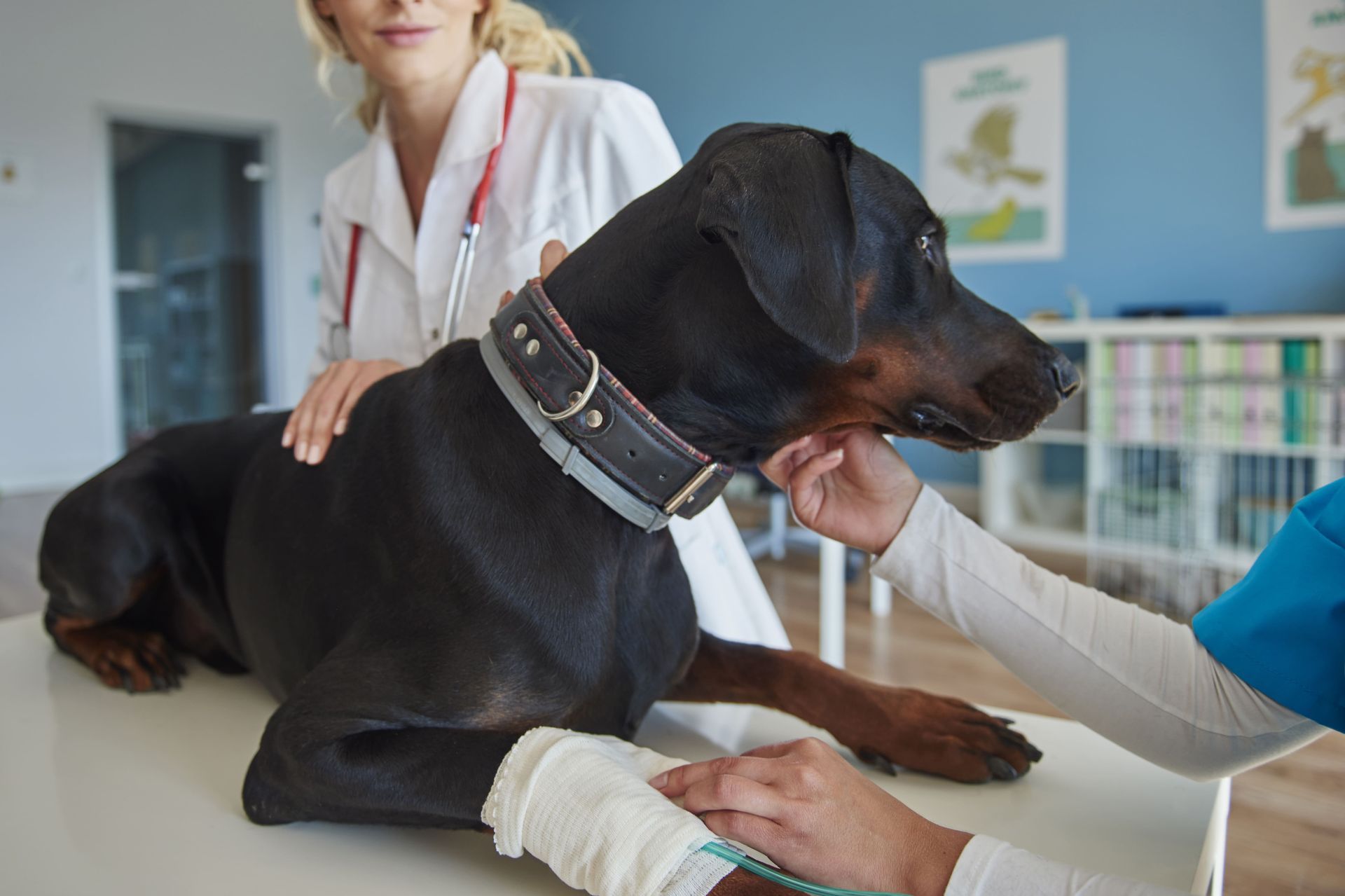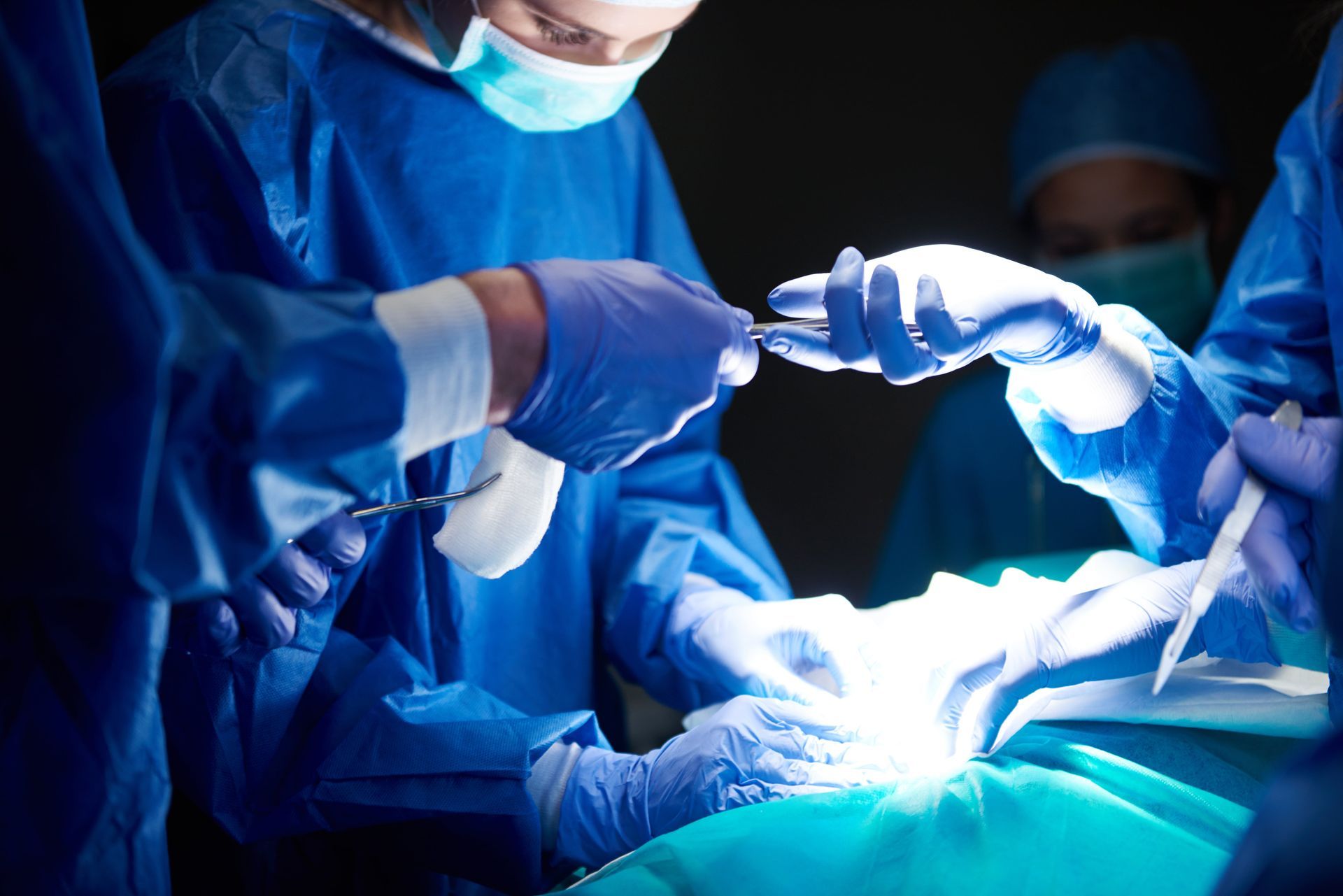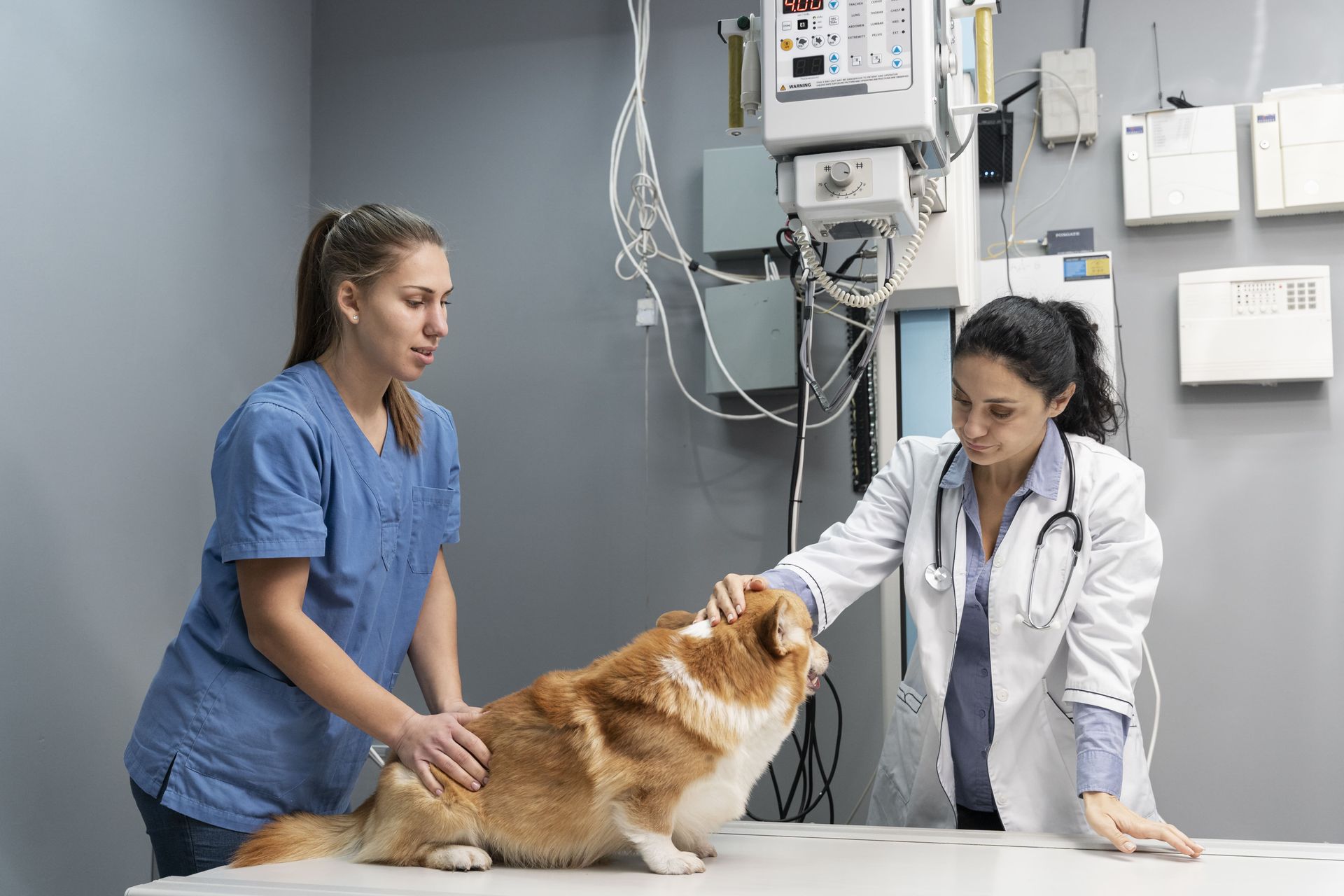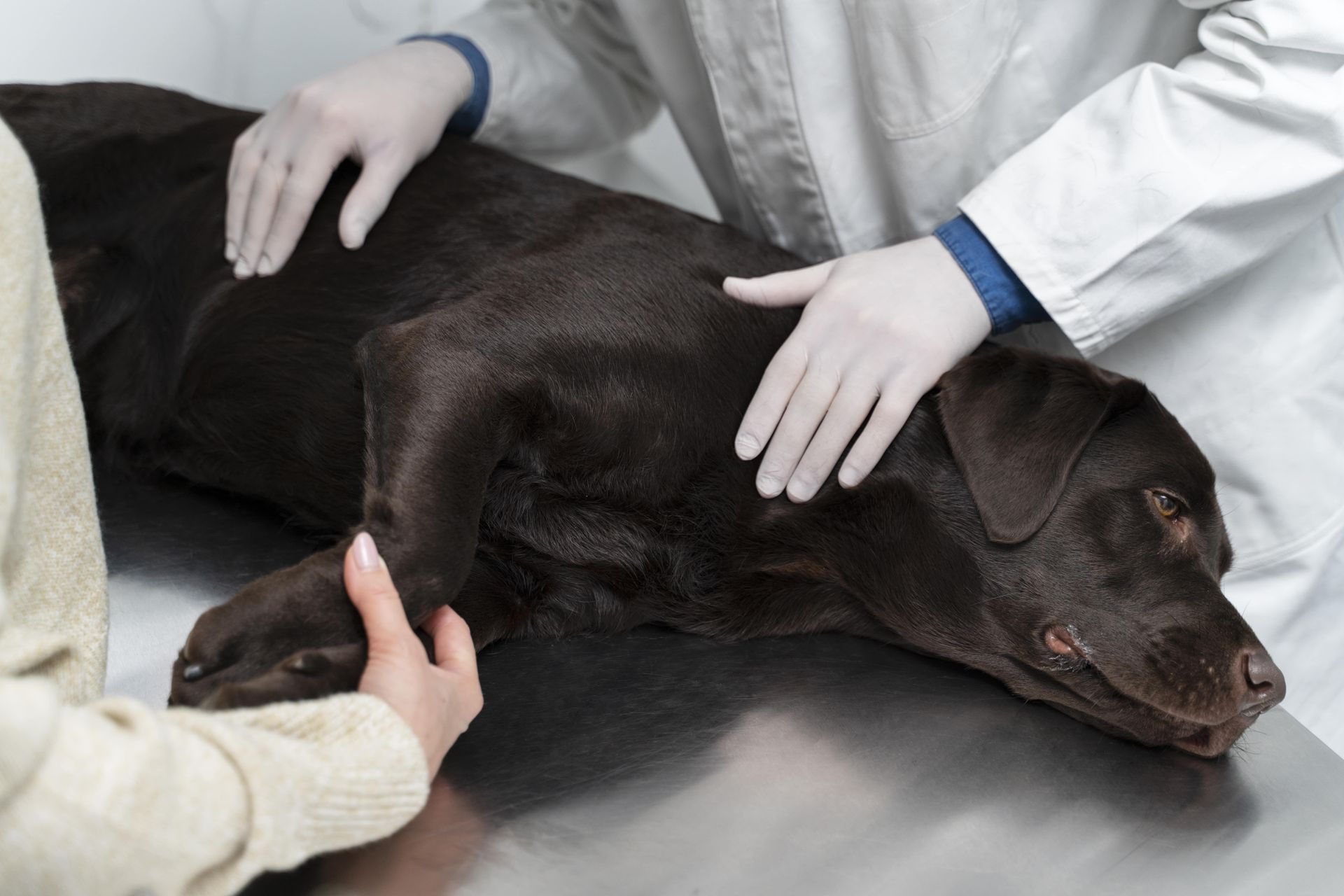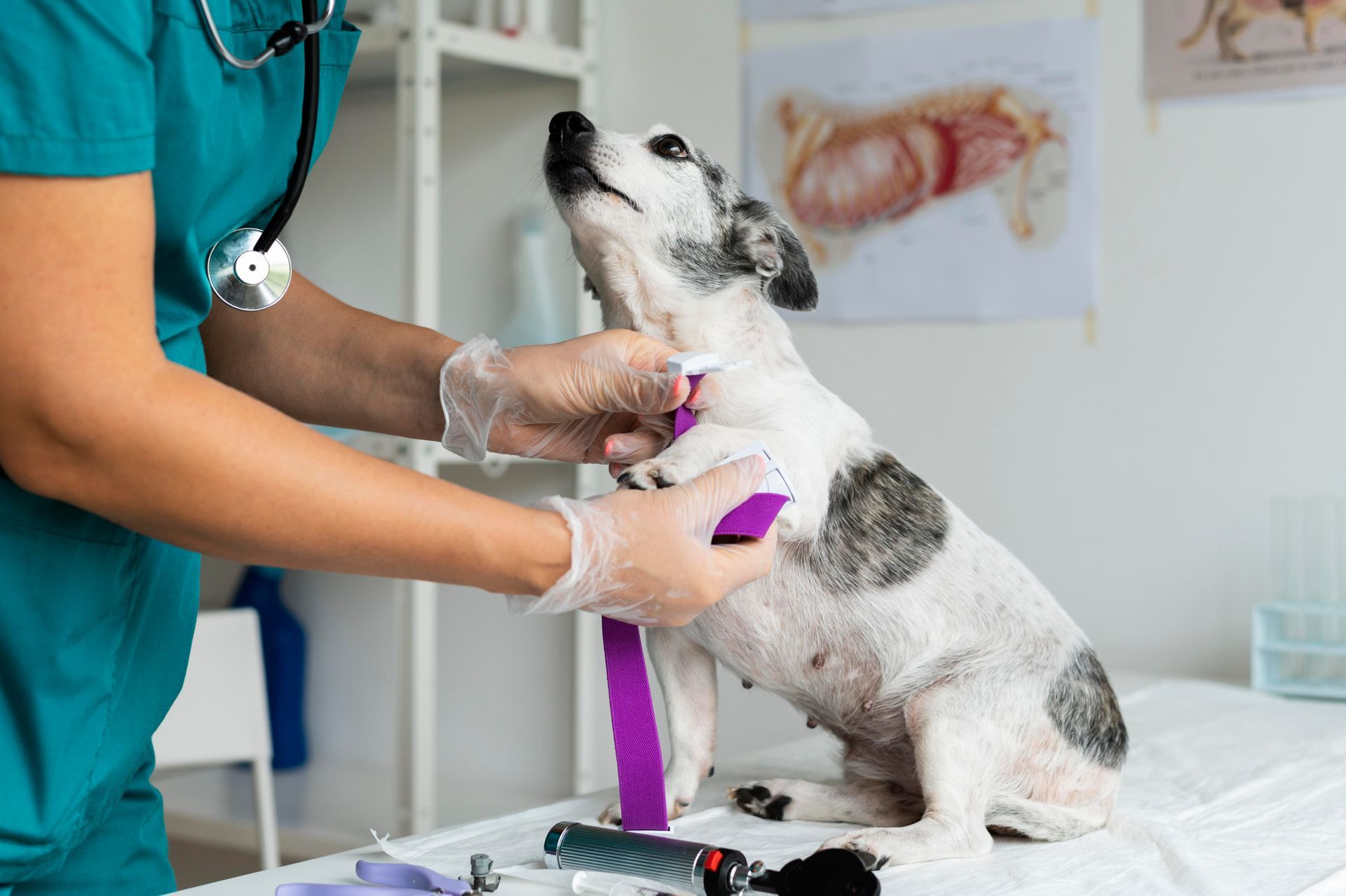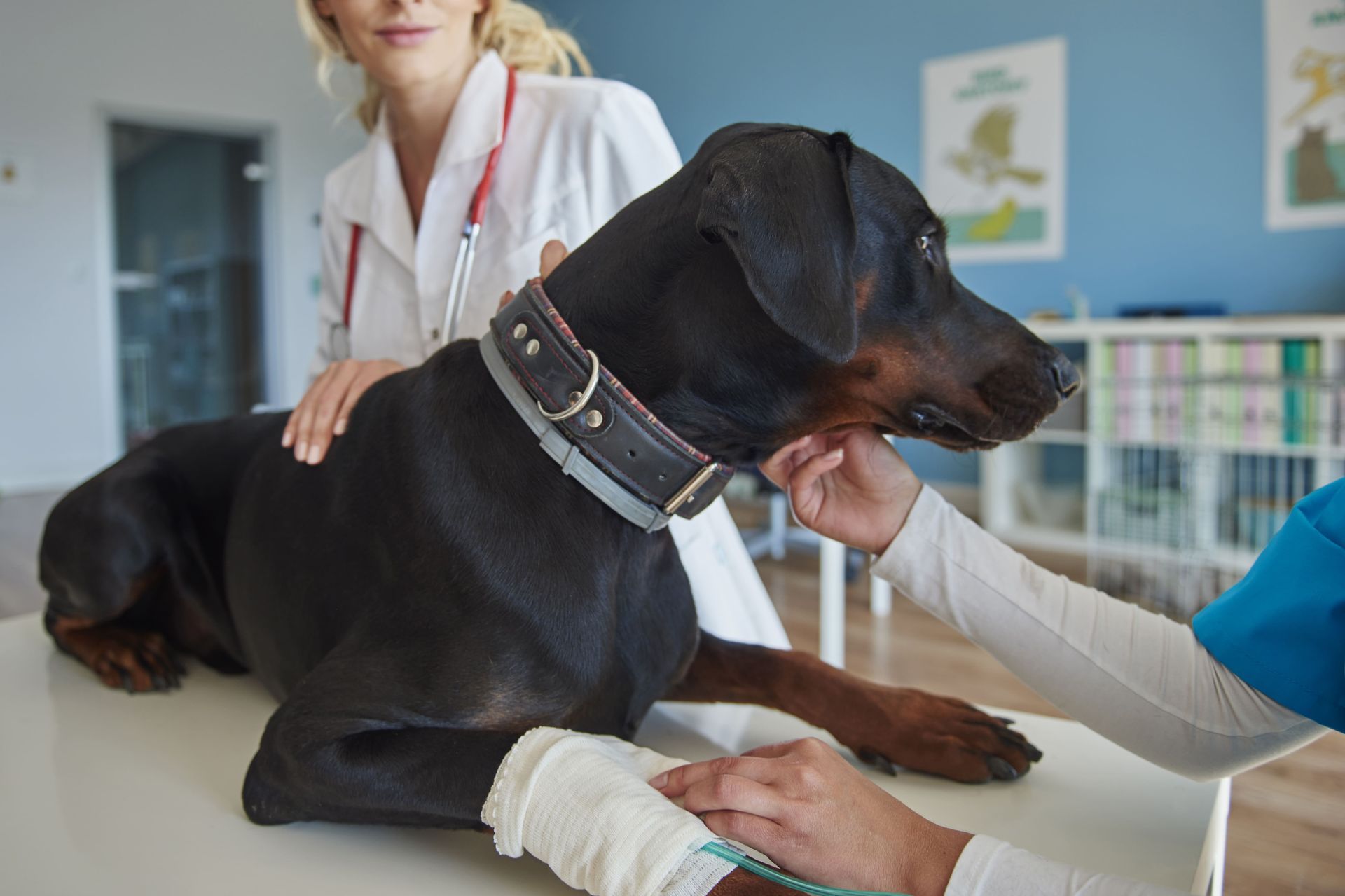Contact Info
133 Lincoln Avenue, Fair Lawn, New Jersey 07410, US
973-427-0990
133 Lincoln Ave, Fair Lawn, NJ 07410
Call Us Now: (973) 427-0990
133 Lincoln Ave, Fair Lawn, NJ 07410
Call Us Now: 973-427-0990
When your dog suddenly starts limping or avoiding playtime, it’s more than just a “bad paw day.” It could be an ACL injury, a common yet distressing condition that can steal the joy right out of your pup’s step. Just like in humans, a torn anterior cruciate ligament can cause pain, instability, and frustration, not just for your pet, but for you as a loving owner. The good news? Dog ACL surgery
can be a transformative solution, offering your furry friend a second chance at running, jumping, and tail-wagging with joy.
In this guide, we’ll walk you through everything you need to know about this important surgery, from understanding the injury and surgical options to pre-op prep and post-op care. Whether you’re facing a diagnosis or simply want to be prepared, this blog is your go-to roadmap for helping your best friend heal and thrive, one step at a time.
Understanding ACL Injuries in Dogs
ACL injuries in dogs are similar to those humans experience. The anterior cruciate ligament (ACL) in the knee can tear due to sudden movements or gradual wear and tear. Recognizing signs of an ACL injury, like limping or avoiding weight on a leg, is the first step in getting your dog the help they need. This crucial ligament, often compared to the human ACL, provides the necessary support for joint stability during movement. Dogs that are young, active, or belong to larger breeds are at a higher risk.
Early intervention is vital to prevent further damage and complications such as arthritis, which typically develops if the condition is left untreated over time. Detecting an ACL injury early can significantly improve your dog's quality of life. Beyond limping, look for other symptoms such as swelling around the knee, clicking sounds during movement, and decreased willingness to run or jump. These signs indicate that your dog's knee is unstable, possibly leading to severe discomfort and reduced activity levels.
It’s essential to manage your dog's weight and activity, as obesity and high-intensity activities can increase the risk of injuries. According to PetMD, heavy breeds like Labradors or Rottweilers are more predisposed to these injuries. Keeping this in mind can guide preventive measures and ensure long-term joint health in your companions.
When Surgery Becomes Necessary?
While minor ACL injuries may heal with rest and medication, many cases require surgical intervention to fully restore mobility. We'll explore the different types of dog ACL surgery available and discuss how to work with your vet to determine the best option for your pet. Two common surgical procedures are Tibial Plateau Leveling Osteotomy (TPLO) and Tibial Tuberosity Advancement (TTA). TPLO involves reshaping the tibial plateau to stabilize the joint without needing an ACL, while TTA adjusts the tibial tuberosity to achieve the same effect. Both surgeries aim to reduce pain and prevent further deterioration.
Generally, the choice of dog ACL surgery depends on factors like the dog's size, weight, and activity level, as recommended by PetMD. Understanding the surgical options can alleviate some anxiety. The extracapsular repair technique
can be particularly suitable for smaller or less active dogs. This method uses a robust suture to create an artificial ligament outside the knee, restoring stability with minimal invasiveness.
Despite the complexity of such surgeries, they generally boast a high success rate, often exceeding 85% when conducted by skilled surgeons. However, each operation carries risks, ranging from anesthesia complications to potential infections. Careful selection and consultation with your veterinarian are crucial in ensuring a safe and effective recovery for your furry friend.
Preparing Your Dog for Surgery
Preparation plays a key role in the success of your dog's surgery. This section will cover pre-surgery steps
you can take, including dietary adjustments and creating a calming environment, to ensure your dog is ready for dog ACL surgery day. Begin by discussing the surgery plan with your vet to understand any dietary restrictions; dogs are often advised to fast the night prior to the procedure.
Create a comfortable and stress-free environment to reduce pre-surgery anxiety for your pet. This might include setting up a quiet space with their favorite bed and toys and maintaining a routine that minimizes stress. Such measures can significantly enhance your dog's post-surgery recovery, setting the stage for a smooth healing process.
It’s also important to consider the logistics of surgery day. Transport your dog in a secure and comfortable crate to prevent any sudden movements that could aggravate the injury. Upon arrival at the clinic, remain calm and comforting, as your demeanor will influence your dog's stress levels. Plan ahead and prepare for any necessary aftercare supplies, including medications, bandages, and any specially recommended dietary plans.
Staying organized and informed will help you manage the situation efficiently, allowing you to support your dog's journey to a pain-free life. To better understand these preparations, consider exploring comprehensive resources on dog ACL surgery and orthopedic care available through the Lincoln Avenue Cat & Dog Hospital.
Post-Surgery Care and Rehabilitation
After dog ACL surgery, consistent care and a calm environment are crucial for proper healing. Here are the key steps to support your dog’s recovery:
1. Limit Movement
Confine your dog to a safe, comfortable space away from stairs or slippery floors to prevent strain on the healing leg.
2. Start Controlled Walks
Begin short, slow walks on a leash only when advised by your vet, avoiding any jumping or sudden movements.
3. Follow the Medication Plan
Give all prescribed medications on time and as directed to manage pain and inflammation effectively.
4. Monitor the Incision Site
Check the surgical area daily for swelling, redness, or discharge, and keep it clean and dry to prevent infection.
5. Use an E-Collar or Recovery Suit
Prevent your dog from licking or biting the incision by using an e-collar or vet-recommended recovery wear.
6. Begin Physical Rehabilitation
Incorporate gentle, vet-approved exercises to rebuild muscle strength and improve joint stability over time.
7. Consider Hydrotherapy
Ask your vet about hydrotherapy or underwater treadmill sessions, which offer low-impact muscle strengthening during recovery.
8. Provide Mental Stimulation
Use safe toys and calming activities to keep your dog mentally engaged while their physical activity is restricted.
9. Focus on Nutrition and Hydration
Offer a well-balanced, nutrient-rich diet and ensure your dog has access to fresh water at all times.
10. Maintain a Routine
Stick to a consistent schedule for feeding, medication, and bathroom breaks to help your dog feel secure and heal faster.
Tips for Preventing Future Injuries
Once your dog has recovered, long-term joint health becomes a priority. Here’s how to minimize the chances of repeat injury or strain:
1. Choose Low-Impact Activities
Encourage regular walking or swimming instead of high-impact games like fetch or jumping.
2. Manage Your Dog’s Weight
Keep your dog at a healthy weight to reduce the pressure placed on their joints and knees.
3. Schedule Routine Vet Visits
Regular check-ups help detect early signs of joint issues and allow for timely preventive care.
4. Add Joint-Supporting Supplements
Consider supplements like glucosamine and omega-3 fatty acids to support cartilage and reduce inflammation.
5. Make Your Home Safer
Add non-slip rugs or mats and install ramps to replace stairs, minimizing the risk of falls or slips.
6. Avoid Sudden or Intense Exercise
Introduce new activities gradually and avoid letting your dog sprint, twist, or turn too quickly during play.
Supporting Your Dog Through ACL Recovery
Caring for a dog with an ACL injury can be a challenging journey, but with the right information and support, you can help your pet recover successfully and continue enjoying a happy, active life. Remember, your veterinarian is your best resource for specific advice tailored to your dog's needs. For more guidance, visit the Lincoln Avenue Cat & Dog Hospital
homepage and consult one of our experienced vets.
Conclusion
Dealing with a torn ACL can feel overwhelming, but dog ACL surgery offers a life-changing solution for your pet. With the right preparation, attentive post-op care, and a thoughtful rehabilitation plan, your dog can bounce back with renewed vitality. Think of this journey not as an end, but as a fresh start—where your dog runs, plays, and lives pain-free once again.
Whether you're facing surgery now or exploring preventative care, staying informed makes all the difference. With patience, planning, and love, you’ll be your pup’s greatest ally on the road to recovery.
FAQs
Q-1. How long does it take for a dog to recover after ACL surgery?
Ans: Recovery from dog ACL surgery typically takes between 8 to 12 weeks, depending on the dog's age, size, and overall health. Full recovery can take up to 6 months with rehab.
Q-2. Can my dog walk right after ACL surgery?
Ans: Most dogs can bear limited weight within a few days post-surgery. However, strict activity restrictions and controlled walks are essential to ensure proper healing.
Q-3. Is physical therapy necessary after dog ACL surgery?
Ans: Yes. Physical therapy significantly aids recovery, improving muscle strength and joint flexibility. Options like hydrotherapy are commonly recommended by vets.
Q-4. How much does dog ACL surgery usually cost?
Ans: The cost of dog ACL surgery can range from $2,000 to $5,000, depending on the type of surgery, clinic location, and any additional treatments or medications needed.
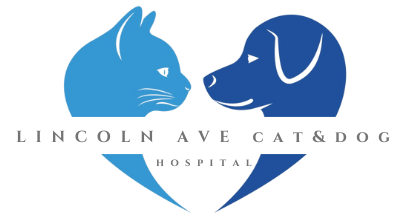
The Lincoln Avenue Cat & Dog Hospital was founded in 1984, quickly emerging as a regional leader in treating felines exclusively.
Quick Links
Contact Info
133 Lincoln Avenue, Fair Lawn, New Jersey 07410, US
973-427-0990

Quick Links
Contact Info
133 Lincoln Avenue, Fair Lawn, New Jersey 07410, US
(973) 427-0990
Fax: (973) 427-0990
© 2025
All Rights Reserved | Lincoln Ave Cat & Dog Hospital
New Paragraph
PAYMENT POLICY
Please note that there is a 3.5% processing fee applied to all credit card payments. If you wish to not incur this fee we will accept a debit card or cash. We apologize for any inconvenience.
